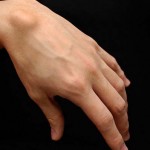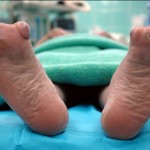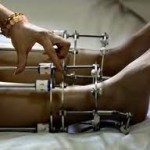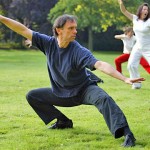Section: Musculoskeletal
Musculoskeletal Disorders and Ayurveda
Posted in Musculoskeletal No discussion yet on December 15th, 2012
Musculoskeletal disorders are greatly difficult and painful aches in the joints and the muscles. The person loses the strength in the hand and also has a lot of stiffness and swelling. Alongwith this there is a general pain in the forearms, wrists, neck, elbows, and the back. The motion is lesser in the neck, shoulder and the back. The vision is blurred and there is a lot of tingling and aching too. The person loses colour in the regions that are affected and there are headaches caused due to tension stress and other ailments.
Why does a person get a musculoskeletal disorder? The reasons are many. It could either be a wrong posture due to sitting in front of the computer. It could be due to lack of support in the back while working. It could be because the person is in the same position for a long time. It could be due to the muscles stretching completely in the ligaments, tendons and muscles. Sometimes over activity leads to a pain in the musculoskeletal joints. So actions like bending [...]
Osteoarthritis Myths Debunked
Posted in Disease & Disorders, Musculoskeletal No discussion yet on February 14th, 2011
Osteoarthritis (degenerative arthritis) is one of most pervasive conditions affecting people, still several misconceptions related to it abound. As per recent study findings, preliminary signs and symptoms of a secondary condition could be present in comparatively younger individuals. Injuries, being overweight or obese, a sedentary & unhealthy lifestyle & heritable conditions are some of the decisive risk factors that are causal to joint cartilage wearing away.
Here are some of the most widespread osteoarthritis myths de-clobbered.
Myth# 1 - Osteoporosis & Osteoarthritis are tantamount
The reality is the osteoporosis is condition of bone fragility because of reduced bone mineral density making the person more susceptible to fracture while osteoarthritis is a joint condition arising due to lost cartilage (a protein matter which functions as a cushioning agent in the inter-bone areas of the joints) in the joint areas.
Myth# 2 – Only the elderly are affected
This is [...]
Ganglion Cyst (Bible Cyst)
Posted in Disease & Disorders, Musculoskeletal No discussion yet on January 14th, 2011
Ganglion cysts are tumors or swellings on the joints or casing of tendons (tissues connecting muscles to bones). They appear alike fluid-filled sacs (cysts). Within the cysts is present a thick, gluey, translucent, uncoloured, gelatine-similar matter.
Based on the size, a ganglion cyst might feel hard or squishy.
A big cyst or several smallish ones might arise. Several small-sized cysts could proffer the look of more than a single cyst; however a single stem inside the deep-set tissue generally attaches them. Such form of cyst isn’t disruptive & constitutes around fifty percent of all soft tissue hand tumor cases.
Ganglion cyst or bible cyst is more prevalent among females & seventy percent develop in individuals in the age group of twenty to forty. Atypically, ganglion cyst would arise in kids under ten years of age.
Ganglion cyst often develops on the backsides of the hands (sixty to seventy percent), at the joints of the wrists & could even arise on the palm [...]
Non-Invasive Ways of Getting Respite from Painful Bunions
Posted in Disease & Disorders, Musculoskeletal No discussion yet on October 29th, 2010
Most of the times surgical intervention is deemed to be the sole means of treating bunions which are mostly agonizing, unpleasant bumps forming due to advancing erroneous alignment of the major joint in the big toe.
Providentially, management of majority of the bunion cases could be done non-invasively and explained herewith are 7 worth-while approaches for getting reprieve.
Invest in spacious footwear
Looking for shoes having flattish soles, laced up sporty or soft leather footwear having deep, wide-toed boxes or open sandal having strapping which wouldn’t be touching the aggravated spot. Wearing footwear having lace or buckling which could be fastened thus giving the feet greater support as compared to slip on types.
Stilettos have a tendency of forcing the toes on to the frontal area of the footwear & crowding them thus worsening the bunion condition. Hence, it is advisable to don flat footwear or the low-heeled varieties.
Shopping at the later part of the day which [...]
Thigh Fractures Risk Related to Osteoporosis Medications – Probing Safer Choices
Posted in Disease & Disorders, Musculoskeletal, News No discussion yet on October 15th, 2010
Individuals taking a grade of osteoporosis medicines known as bisphosphonates for more than 5 years might be facing an augmented danger of suffering from fracture in the femur region, according to a caveat lately raised by the FDA. The risk would be included in the labelling of this category of osteoporosis medicines. Those coming under this class are:
Ibandronate (Boniva).
Alendronate (Fosamax or its plus D version & generic types).
Zoledronic acid (Reclast).
Risedronate (Atelvia, Actonel alone or alongside calcium & generic versions).
The paradox is that such medications have been formulated for preventing fracture in bones, thus for osteoporosis patients or those who take any of the above mentioned medications here is the best approach to take.
Since long warning about the potential risk associated with bisphosphonate-based drugs have been surfacing. In case there has been diagnosis of low bone mass or density – a condition known as osteopenia or a condition [...]
Increase Height with Bone-Breaking Surgery, HGH
Posted in Disease & Disorders, Musculoskeletal No discussion yet on October 4th, 2010
Being short-statured unquestionably mars prospects to become models or basketball players. However, social researches have indicated that taller people are also monetarily endowed, holding more headship positions & more sexually active as compared to their shorter compeers.
Largely there is no escape from short-stature. Height is heritably programmed, although researchers yet do not totally comprehend the manner in which genes are controlling development. The latest study appearing in ‘Nature’ could yet recognize genes for merely ten percent of difference in height among humans.
However many vertically-challenged individuals are going under-the-knife in the quest to be towering a few inches higher and in the process risk their lives, limbs and a sizeable amount of money.
Many short people suffer from low self-worth and feel that the chance of gaining a couple of inches via a leg-lengthening orthopaedics operation would make people treat them with more gravity. Specialists in [...]
Fibromyalgia Sufferers – Try Some Tai Chi
Posted in Disease & Disorders, Musculoskeletal No discussion yet on August 20th, 2010
Merely twelve weeks of doing tai chai – a form of weight bearing, low impact, aerobic yet unwinding exercise that involve gradual, placid movements, deep-breathing and meditation – provided respite to long-standing niggling fibromyalgia symptoms and enhanced quality of existence in a scientific study.
In comparison to patients given wellness edification and stretching exercises, tai chi practitioners noted lessening in severity of fibromyalgia symptoms. Moreover tai chi helped in promoting sound sleep, a sense of betterment, lesser pains, greater energy levels and had improved health physically as well as emotionally, according to research investigator Doctor Chenchen Wang from the Tufts Univ. School of Medicine.
The investigators were thrilled by the promising outcomes they noticed which far surpassed those in clinical studies for treating fibromyalgia with drug therapies. One arthritic study entrant kept exclaiming that he was pain-free as a result of doing tai chi.
However the [...]
Are You Suffering from Reactive Arthritis Symptoms?
Posted in Disease & Disorders, Musculoskeletal No discussion yet on June 3rd, 2010
Reactive arthritis that was earlier occasionally adverted to as Reiter’s syndrome is an arthritis type which along with the joints could additionally affect several other regions of the body inclusive of areas like eye, skin and urethral region (tube carrying urine from bladder to be excreted out).
The condition is identified due to an array of symptoms appearing in diverse body organs which might or might not surface at the analogous instant. It might surface swiftly and acutely or more gradually with abrupt remission or relapse phases.
Reactive arthritis chiefly afflicts men in the age band of twenty to forty years of age and sexually active. People having HIV or human immunodeficiency virus are especially at elevated risk.
Reactive Arthritis Causes:
The reasons for reactive arthritis developing are yet unclear, however studies indicate that it is due to presence of a merger of heritable pre-disposition and diverse other factors.
About seventy-five percent of people having this [...]
Symptoms of Fibromyalgia – How it impacts Men
Posted in Disease & Disorders, Musculoskeletal No discussion yet on May 24th, 2010
Fibromyalgia is a neurological condition causing unceasing pains and weariness. Though symptoms of fibromyalgia have been observed to strike mainly women, but from the approximate five million people affected with this condition in the United States merely ten percent of them are males. Due to this reason, it is commonly perceived to be a woman-centric disease.
Fibromyalgia Atypically Affects Males
The reason behind fibromyalgia occurring or why only a small populace of males ail from it is still unclear. Being infected with some forms of viral infections, traumatic episodes like vehicle accident, being emotionally stressed out could elicit symptoms of fibromyalgia. In several situations, though it has been found to strike without any caveat.
Irrespective of the reason, there are some biological indicators or markers that are usually present in people having this disorder. Fibromyalgia is typified by an imbalanced level of brain chemicals. Individuals having fibromyalgia have been [...]
Arthroscopic Knee Surgery – What Treatment Entails?
Posted in Disease & Disorders, Musculoskeletal No discussion yet on April 27th, 2010
Meniscal transplant surgery is an arthroscopic method for replacing damaged meniscus with donor-acquired cartilage that could be conducted on an out or inpatient basis. Irrespective of whether a person would require staying overnight would be based on the individual medical requirements.
Arthroscopic Knee Surgery Procedure
Arthroscopic knee surgery is among the most prevalently conducted operative methods. During this method, a mini camera is introduced via a tiny slit that has been made. This would provide an unobstructed sight of the inner areas of the knee. The orthopaedic surgeon would insert minuscule operative tools via the other tiny slits that have been made during the method.
Classically two to four inches sized slit is done in the knee area along with a couple of other tiny poke punctures. After this, anchoring of the new-fangled meniscal tissue is done into the shin bone for stabilizing the transplant during arthroscopic knee surgery. Placements of additional sutures are [...]













